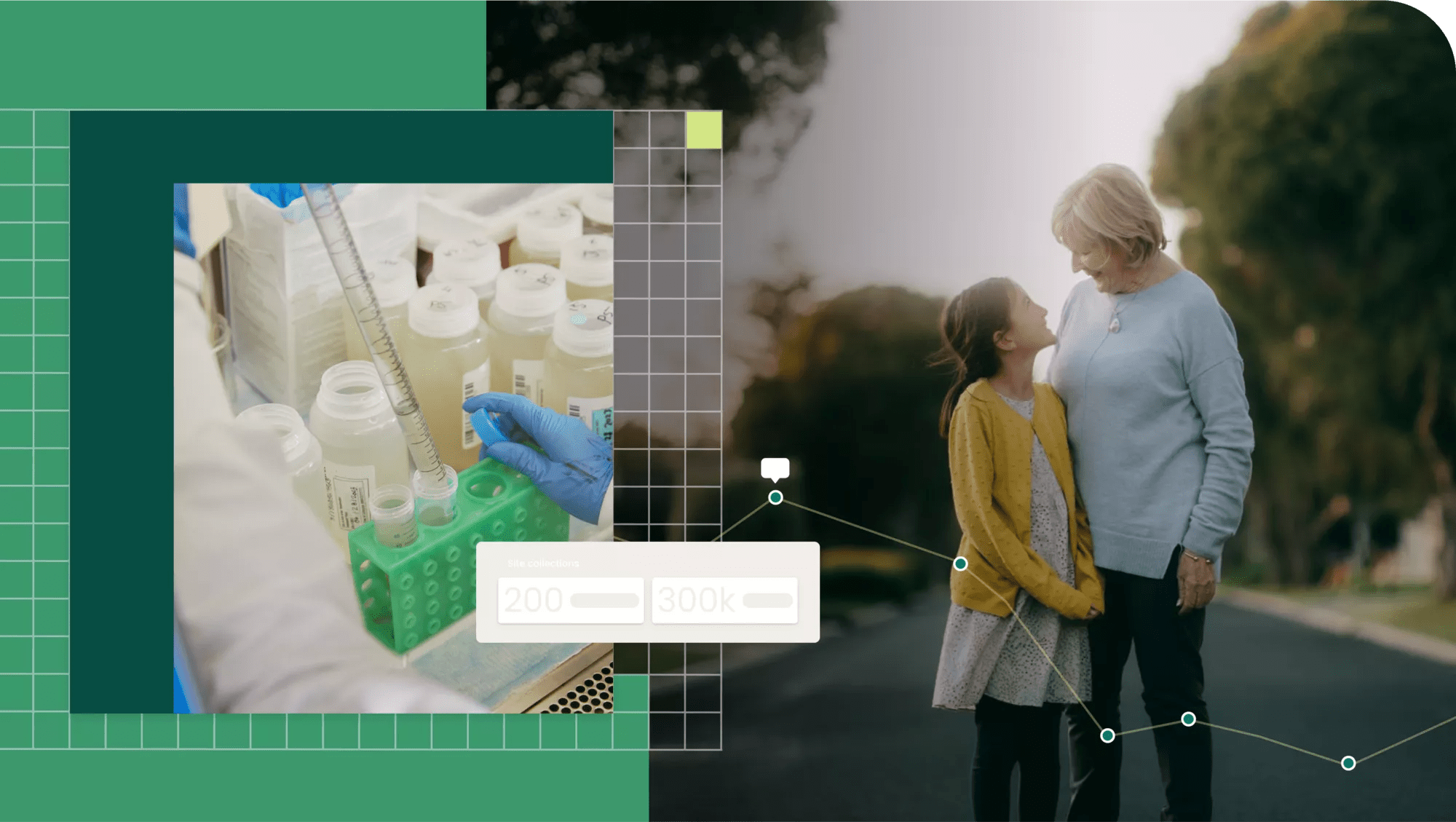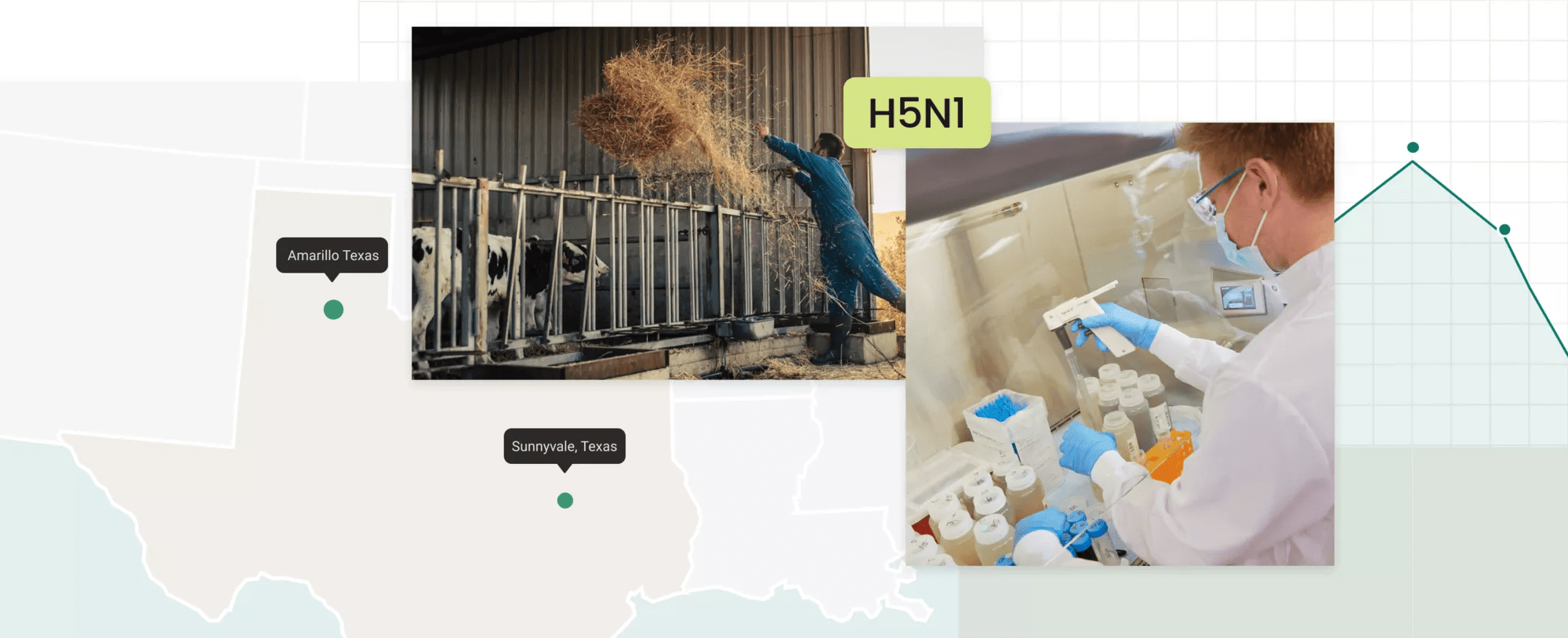What population data could do for the individual — early warning signs with proactive monitoring
A transformation in public health surveillance is underway. The traditional, resource-heavy surveillance systems of the past are now augmented by newer, more advanced approaches to wastewater pathogen surveillance.
Exciting innovations include Verily’s Sightline wastewater program. Sightline uses a wastewater-based epidemiology, which can accurately and proactively measure the concentration of viral and bacterial DNA and RNA for a variety of pathogens in wastewater — in near real time — providing information about levels of disease spread within communities. Timely data can make or break containment efforts against infectious diseases. Verily has the advanced lab capabilities to do multiple tests at once, in parallel, rather than the traditional method of serial testing. Additionally, we can do droplet digital PCR testing, which is much more sensitive and multiplexed than traditional data capture.
With the right data, at precisely the right time, public health officials can make better-informed decisions about how to distribute resources and support our communities. Through wastewater testing, Verily conducts passive environmental screenings that don’t have associated activation energy costs to inform public health interventions. This is a fundamental shift in the traditional model that requires active participation from the healthcare system, transcending barriers such as access to care and distrust in health systems. Verily has implemented assays to test for 13+ pathogens, and we are conducting research and development into several more. The range of pathogens detected is testament to the potential of this approach, promising a future where proactive public health interventions are informed by the flow of daily life.
Emerging pathogens - Zoonotic disease spread
The early warning system facilitated by wastewater testing proves invaluable in monitoring emerging pathogens, particularly in situations where clinical surveillance or active testing for a specific virus may be limited. We saw this recently with the emergence of a strain of influenza that spread from bird flocks to dairy cattle - H5N1, a highly pathogenic avian influenza infection in dairy cattle and other animals. Historically, influenza season peaks from October to March and then significantly drops off. However, there was an uncharacteristic spike of influenza A in samples from some sites included in our WastewaterSCAN program over the past few months. In response, Verily scientists rapidly developed an assay to detect H5 in wastewater samples and further researched the detection of H5 in wastewater on stored samples from sewer systems near areas in Texas where dairy cattle had tested positive. In partnership with WastewaterSCAN, Verily testing on wastewater samples from Amarillo and Sunnyvale, TX revealed the presence of H5 IAV nucleic acid in samples collected shortly before and during the reported dairy cattle cases. The researchers hypothesize that H5 IAV is entering municipal wastewater systems through effluent discharged by milk processing plants which are located within the sewersheds. Our work in Texas suggests that proactive wastewater surveillance testing can serve as a public health monitoring tool by detecting new and emerging animal pathogens with zoonotic potential, like H5N1. This work is ongoing and can form the basis of proactive public and animal health interventions.
The reemergence of dengue
Another disease of growing concern is dengue — a disease that has been a scourge in most of the tropics, but has not caused significant public health concern in the United States. Dengue is a mosquito-borne disease which is particularly dangerous to those that are high risk and pregnant women. Severe dengue, occurring in one out of twenty cases, can cause shock, internal bleeding and even death. Local cases seem to be growing every year — first detected in Southern Florida, and more recently in Southern Texas and Southern California. When people present to clinicians with a fever, dengue is not always top of mind for testing. And without clinical surveillance, this could lead to more widespread contagion. Recent research, Wastewater Detection of Emerging Arbovirus Infections: Case Study of Dengue in the United States , published by the Verily team suggests that we can detect the presence of Dengue Virus at the population level utilizing wastewater monitoring. The study showed that wastewater testing consistently detected Dengue virus serotype 3 in wastewater from Miami-Dade County, despite very low clinical prevalence (~5 cases/1 million people/week). The research results indicate the potential of wastewater testing to help better understand dengue transmission at a community level. These proactive approaches to wastewater monitoring could impact whether community care facilities test for dengue among those that present with fever or other symptoms.

Verily scientist sorting mosquitos at Debug, our public health solution focused on mosquito-borne disease protection.
Possibilities beyond infectious disease
There is so much we can learn from population level data to inform how we care for every individual. Data serves as the key to unlocking precise care decisions, paving the way for proactive disease detection and mitigation strategies. While healthcare’s inequities and data silos are difficult and complex problems to solve – we’re starting to see how continuous and connected public health data can improve efficiencies. This gives us a broader view into how people are experiencing health in their communities, and the opportunities to proactively intervene with the right resources when needed. At Verily, we’re working across our products and platform to address these challenges and to enable our customers with tools to generate and manage decision grade data — data that can inform critical decisions — from public health interventions, to clinical trial recruitment, to care management.




